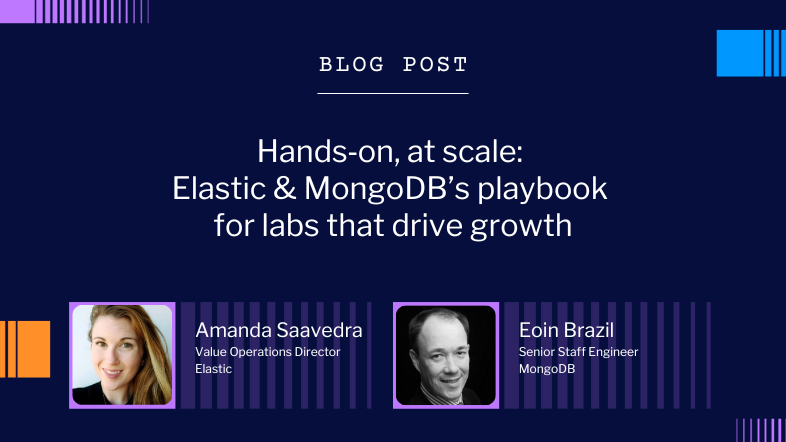Navigating Enterprise Developer Onboarding Challenges
One of the main hurdles enterprises face during developer onboarding is the sheer diversity of technologies and frameworks. The onboarding process becomes a maze of choices, from legacy systems to cutting-edge tools. Ensuring developers are equipped with the knowledge and skills to navigate this intricate landscape is crucial for their success.
Insights from a Platform Engineering Expert
We sat down with Platform Engineering expert Turja Chaudhuri to explore the complexities and challenges of developer onboarding at enterprises, particularly in adopting cutting-edge technologies like Kubernetes.
Turja's interest in writing about adoption in enterprises stemmed from his realization that most online resources focus on small-scale projects, significantly different from the challenges large enterprises face. His extensive experience in renowned firms like Samsung Research, PwC, Accenture, and EY gave Turja a firsthand view of how things break unless robust patterns and design principles are followed at scale.
Driving Technology Adoption Within Enterprises
Enterprises prioritize stability because it aligns with customer expectations. However, it's important to remember that stability doesn't hinder innovation. The company's technology leadership plays a crucial role in striking the perfect balance between stability and innovation. One of the significant challenges in enterprise onboarding is driving adoption across the organization. Turja recommended several strategies, starting with the need for well-articulated documentation, automated processes, and onboarding paths. He also highlighted the importance of having champions within the organization who can promote and support the adoption of new technologies.
Roadshows, informative collateral, and dedicated teams focused on adoption can further accelerate the process. And having sandbox or non-production environments where engineers can rapidly prototype without extensive guardrails. This allows for quick experimentation without compromising security or stability. Turja stressed the importance of finding the right balance between innovation culture and stability when transitioning to production.
Documentation: A Key Enabler
Documentation plays a crucial role in enterprise onboarding. Manual guidance for every engineer is impractical in large companies, making well-documented resources necessary. High-quality documentation can answer most questions and guide engineers effectively. Turja cited examples like Microsoft and Amazon, known for their exceptional documentation quality, as benchmarks for enterprises to follow.
Developer Productivity and Adoption
Next, we discussed measuring developer productivity and adoption. Turja shared Spotify's metric of how long it takes a new developer to merge their 10th pull request. This metric provides valuable insights into how quickly new engineers can become productive. Turja underlined the role of good documentation, training, and lab environments in enhancing developer productivity and fostering adoption.
The Great Kubernetes Divide
To illustrate the challenges enterprises face in tech adoption, Turja shares an example of Kubernetes adoption among Fortune 2000 enterprises. Rather than providing a step-by-step guide, many enterprises take a learn-as-you-go approach with Kubernetes. With readily available online resources and control over infrastructure, it's easy to dive in and start building. However, this approach is not without its downsides. As pioneers evangelize their experiences, more teams begin self-onboarding without proper governance, resulting in eventual breakdowns that leave organizations puzzled. This scenario can discourage new adopters and create the perception that Kubernetes is too difficult. Turja calls this phenomenon the "Great Kubernetes Divide," where teams struggle to align on best practices, patterns, and guidelines.

The Role of Kubernetes Center of Excellence
Enterprises can simplify adoption by establishing a Kubernetes Center of Excellence, ensuring standardization and best practices across clusters. Turja explained that a Kubernetes Center of Excellence comprises subject matter experts who define patterns, best practices, standards, and guides. It also offers platform offerings that automate various aspects of Kubernetes management. The aim is to reduce the cognitive load on developers, ensuring uniformity and standardization across clusters.
Customized Training for Successful Adoption
Turja emphasized the importance of organizations prioritizing two types of training: technical knowledge about Kubernetes and hands-on training on the enterprise's specific Kubernetes platform. Engineers can benefit from free labs, comprehensive documentation, and well-defined training paths to better understand the technology and the enterprise's tailored approach.
On Platform Engineering
Turja firmly believes platform engineering is here to stay, and it’s not a hype. According to him, platform engineering plays a pivotal role in enabling organizations by relieving developers of cognitive load and enabling them to focus on core tasks. By implementing strong platform engineering practices and fostering a culture of innovation and stability, enterprises can effectively navigate the challenges of onboarding engineers.
Are you ready to transform your developer onboarding?
Turja's valuable insights shed light on the intricate but essential process of onboarding engineers in enterprise settings. As organizations evolve, embracing platform engineering practices will become increasingly crucial for success in the dynamic tech landscape.
For organizations seeking to enable their teams with practical, hands-on training, Instruqt can help. Instruqt offers a powerful platform to onboard and upskill engineers on your tech stacks. By embracing hands-on learning in a controlled environment, you can ensure that your team gains practical experience without the fear of crashing production systems. With Instruqt, you can efficiently onboard new talent, provide ongoing training, and keep your workforce up-to-date with the latest technologies.
In a world where innovation and collaboration drive success, Instruqt is your strategic ally, empowering your organization to thrive in Platform Engineering and Developer Experience. Discover the future of training and development with Instruqt.





.png)




